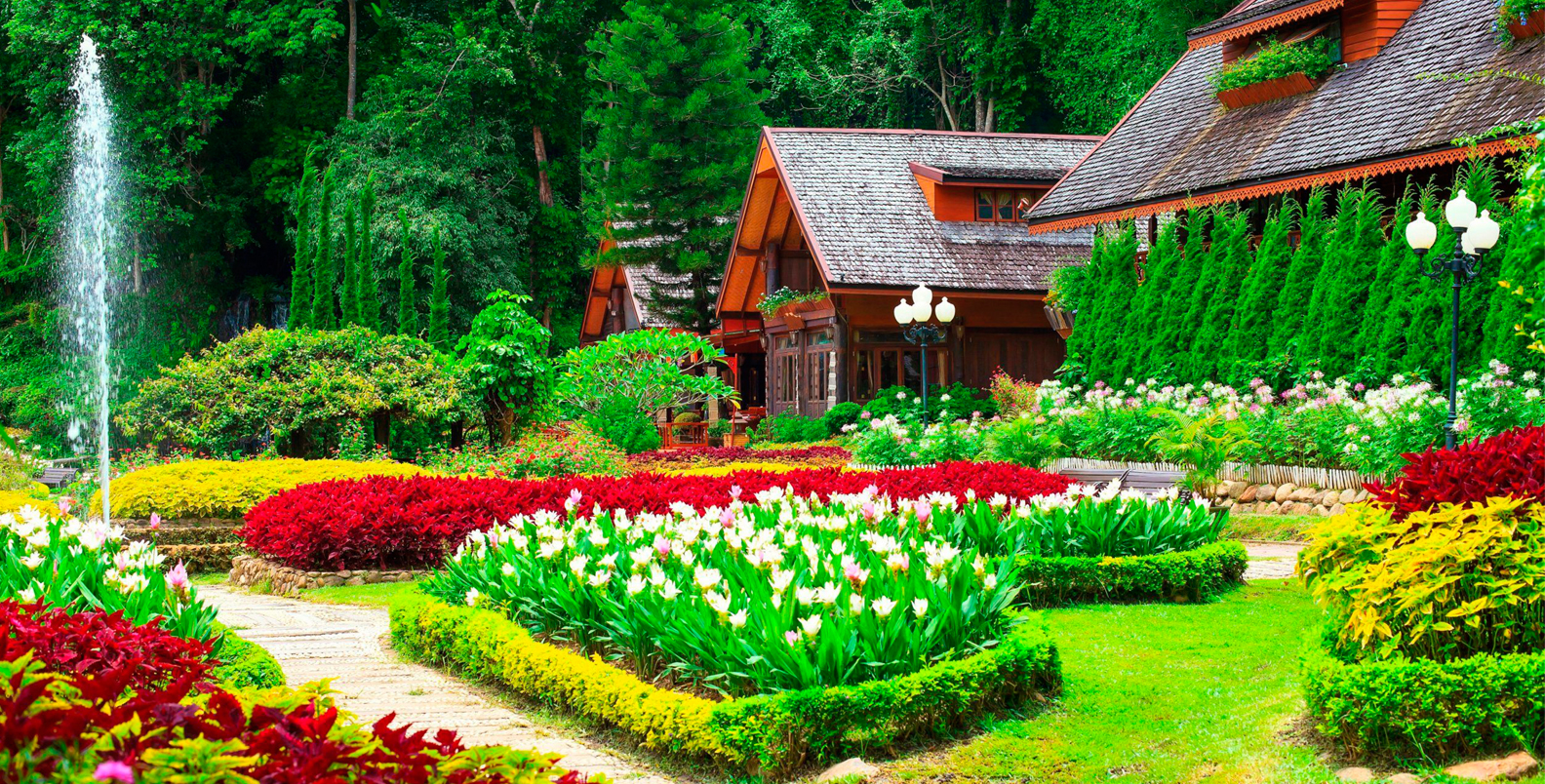The garden, in its many forms, stands as one of the most profound expressions of human interaction with nature. It is a space where creativity meets the earth, where the raw beauty of the natural world is sculpted into an environment that provides both aesthetic pleasure and practical benefits. Whether sprawling and formal or small and intimate, gardens serve as refuges from the complexities of modern life, offering peace, tranquility, and a space to reconnect with the earth. The art of gardening, an age-old practice, has evolved significantly over centuries, reflecting the changing tastes, cultures, and values of society. Today, as urbanization continues to rise and environmental concerns intensify, the garden remains a place where beauty, sustainability, and serenity coexist.
The Historical Roots of Gardening
Gardens have existed in various forms for thousands of years, with evidence of their cultivation stretching back to ancient civilizations. In Egypt, Persia, and Mesopotamia, gardens were often seen as symbols of paradise and abundance. The Hanging Gardens of Babylon, one of the Seven Wonders of the Ancient World, epitomized the idea of a luxurious garden, combining elaborate irrigation systems with lush vegetation in an arid landscape. These early gardens were typically designed for royalty and nobility, serving not only as a form of aesthetic indulgence but also as a demonstration of power and control over nature.
In ancient Greece, gardens took on a more philosophical significance. The Greeks valued gardens as spaces for intellectual contemplation and leisure. Philosopher Aristotle and his disciples, for example, gathered in the Lyceum’s garden to discuss matters of philosophy and ethics. The Roman Empire further refined the garden, with villas boasting vast ornamental gardens, complete with sculptures, water features, and fragrant flowers. These gardens were an extension of Roman wealth and luxury, designed to impress guests and provide the perfect setting for banquets and leisure.
As the Middle Ages unfolded, gardens began to take on more practical functions. Monastic gardens, especially in Europe, were created for growing medicinal herbs, vegetables, and flowers. These gardens were not just spaces for beauty but were imbued with spiritual and practical importance, providing sustenance for the community and fostering a connection to the divine. During the Renaissance, gardening once again became an art form, with the development of the Italian garden style characterized by geometric precision, symmetry, and the use of fountains, statues, and ornamental hedges.
By the 17th and 18th centuries, garden design in Europe had become more sophisticated, with the French formal garden reaching its peak in the designs of André Le Nôtre at Versailles. The formal garden was characterized by its grand symmetry, with long, straight paths, manicured lawns, and precisely arranged flowerbeds. In contrast, the English landscape garden, which emerged in the 18th century, emphasized naturalistic beauty, featuring winding paths, wildflower meadows, and lakes that mirrored the ideals of romanticism and a return to nature.
The Role of Gardens in the Modern World
In today’s world, the garden remains as relevant as ever, though its functions and designs have shifted according to the needs of contemporary society. Urbanization has led to a significant decrease in open spaces, making private gardens increasingly valuable for their aesthetic, mental, and physical benefits. In cities, where people often find themselves disconnected from nature, gardens offer a sanctuary — a retreat where one can escape the noise, pollution, and pressures of urban living. Whether a balcony garden or a small courtyard, these spaces provide a vital link to nature and help counterbalance the stresses of modern life.
Gardens today serve multiple purposes, from the purely decorative to the highly functional. The rise of sustainable living has brought about a resurgence in vegetable gardens, with people seeking to grow their own food as a way of fostering self-sufficiency and reducing their environmental impact. Urban farming, often implemented in community gardens or even on rooftops, not only provides fresh produce but also encourages social connections and community-building. It is a beautiful irony that, in our increasingly fast-paced world, the slow and methodical process of gardening has gained new popularity as a way of grounding oneself in the present moment.
The use of gardens as therapeutic spaces has also gained widespread recognition. Horticultural therapy, the practice of using plants and gardening activities to improve physical and mental health, is employed in various settings, including hospitals, rehabilitation centers, and schools. The act of tending to plants, observing growth, and spending time in nature can have a calming effect, reduce stress, and improve overall well-being. For many, the garden becomes a space for mindfulness, where time slows down and personal reflection becomes a natural byproduct of interacting with nature.
Garden Design: Blending Aesthetics and Functionality
Garden design, like any other form of art, is a dynamic process that brings together elements of nature, culture, and personal taste. The design of a garden reflects not only the personality and style of the gardener but also the practical considerations of the space, climate, and function. A well-designed garden strikes a balance between beauty and utility, creating a harmonious environment that pleases the eye and meets the needs of those who use it.
The most basic element of garden design is the layout. Whether it is a symmetrical, formal garden or a relaxed, informal one, the arrangement of plants, paths, and structures sets the tone of the space. In larger gardens, zones or rooms may be created, each serving a distinct purpose — an outdoor dining area, a quiet nook for reflection, or a play area for children. The use of focal points, such as sculptures, fountains, or well-placed trees, can direct attention and create a sense of flow, guiding visitors through the space.
The selection of plants is perhaps the most personal aspect of garden design. The choices one makes can reflect not only aesthetic preferences but also practical considerations, such as climate, soil conditions, and maintenance. Flower gardens, for instance, might showcase a riot of color, with blooms changing with the seasons, while a Japanese garden emphasizes tranquility through carefully placed stones, bonsai trees, and water features. Native plants are increasingly favored for their low maintenance requirements and ability to support local wildlife. Pollinator-friendly plants, which attract bees, butterflies, and birds, have also seen a surge in popularity as people recognize the importance of supporting local ecosystems.
Water features, such as ponds, streams, and fountains, are often incorporated into gardens to create a sense of movement and sound, enhancing the atmosphere of calm. These features not only add visual interest but also provide habitats for aquatic plants and animals, contributing to biodiversity. Outdoor lighting, strategically placed, can extend the enjoyment of a garden into the evening, casting a soft glow over plants and creating an enchanting atmosphere.
The Future of Gardening: Sustainability and Innovation
As the world faces challenges related to climate change, population growth, and resource depletion, the future of gardening will increasingly focus on sustainability and innovation. Green technologies, such as rainwater harvesting systems, solar-powered garden lights, and composting techniques, are already becoming staples in the modern garden. The emphasis on using organic practices, reducing water consumption, and fostering biodiversity is expected to continue, with gardeners becoming stewards of the land in ways that promote long-term ecological health.
Vertical gardening, which involves growing plants upwards rather than outwards, is a burgeoning trend in urban spaces where horizontal space is limited. This technique allows gardeners to maximize their use of space while also incorporating greenery into the built environment. Additionally, the development of smart gardening technology, including automated irrigation systems and soil sensors, has made gardening more efficient and accessible for a broader range of people.
The garden of the future may also be a space that adapts to the changing climate. Drought-resistant plants, xeriscaping, and the use of local plant varieties are strategies that help mitigate the effects of environmental stressors on gardens. At the same time, gardens will continue to be places of refuge and beauty, offering a reminder of the delicate balance between humanity and the natural world.
Conclusion
The garden, in all its forms, is a testament to human creativity and our deep-seated need to connect with nature. From ancient royal gardens to modern urban oases, gardens reflect the cultural, philosophical, and aesthetic values of their time. Today, as we navigate the challenges of a rapidly changing world, the garden remains a sanctuary — a space where we can find peace, nurture our well-being, and reaffirm our bond with the earth. Whether through the cultivation of flowers, the growth of food, or the pursuit of environmental sustainability, gardens continue to offer a rich, multifaceted experience that resonates deeply with our human spirit.






